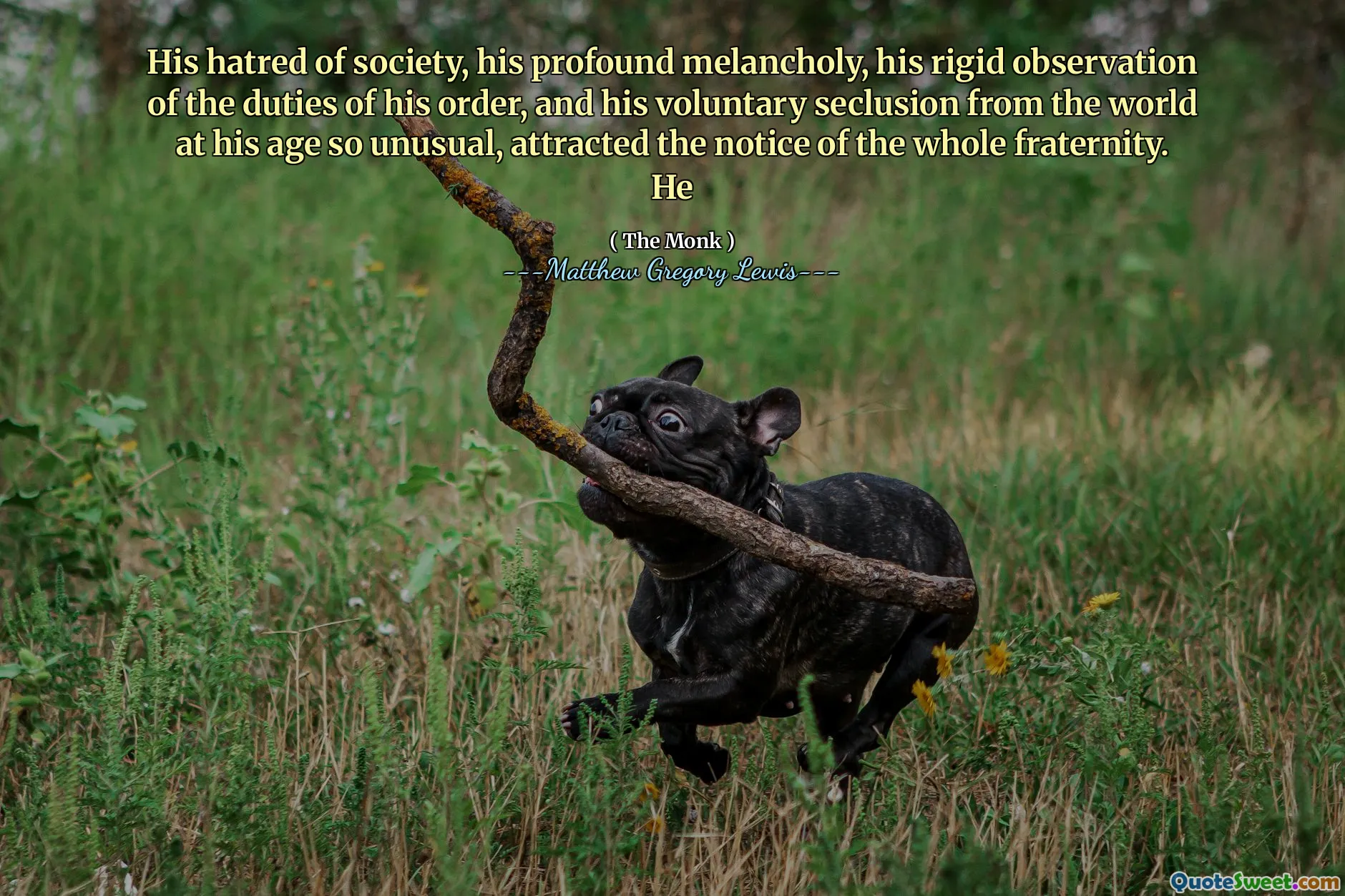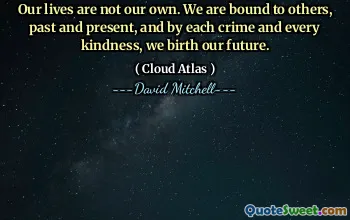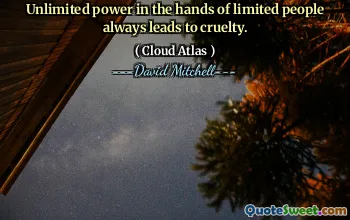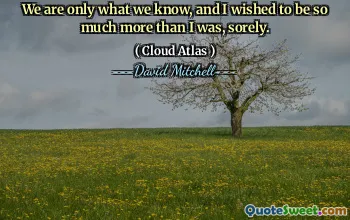
His hatred of society, his profound melancholy, his rigid observation of the duties of his order, and his voluntary seclusion from the world at his age so unusual, attracted the notice of the whole fraternity. He
The excerpt paints a vivid picture of an individual deeply alienated from society, driven by intense feelings of contempt and melancholy. His unwavering commitment to his vows and duties suggests a person consumed by an internal struggle—caught between personal devotion and the desire to withdraw from external engagements. Such voluntary seclusion often signifies a search for spiritual or mental clarity, or perhaps an escape from the corrupting influences of society. The description of his age emphasizes that this choice is unconventional, highlighting the societal expectations about active participation and social engagement at different life stages. This character could symbolize the archetype of the ascetic or the monk who chooses solitude to attain a higher spiritual awakening, reflecting on the monastic ideals of renouncement and internal reflection. However, the intense emotions attributed to him—hatred and melancholy—add a layer of psychological complexity, indicating internal conflict or emotional suffering. The fact that his behavior attracted attention within his community underscores societal perceptions of deviance or abnormality, especially in a setting where such dedication is normally admired. This portrayal prompts consideration of how societal norms influence our understanding of mental states and choices related to seclusion and emotional expression. It also invites reflection on the nature of true devotion versus personal despair, and how individuals navigate their inner worlds amidst external judgments.







